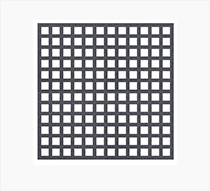loading...
- No. 9, Xingyuan South Street, Dongwaihuan Road, Zaoqiang County, Hengshui, Hebei, China
- admin@zjcomposites.com
- +86 15097380338
- Welcome to visit our website!
FRP Balustrades for Safe and Stylish Outdoor Spaces
The Versatility and Benefits of FRP Balustrades
In the construction and architectural industries, safety, durability, and aesthetics are paramount concerns. Among the diverse options available for safety railings, FRP (Fiber Reinforced Plastic) balustrades have become increasingly popular, offering unique advantages that make them an excellent choice for various applications. This article explores the features, benefits, applications, and maintenance aspects of FRP balustrades, highlighting why they have emerged as a preferred option in modern design.
Understanding FRP Balustrades
FRP, or Fiber Reinforced Plastic, is a composite material made from a polymer matrix reinforced with fibers, typically glass or carbon. This combination creates a lightweight yet incredibly strong material that is resistant to corrosion, UV light, and adverse weather conditions. The use of FRP in balustrades provides a robust solution for both residential and commercial properties.
Key Features of FRP Balustrades
1. Lightweight Yet Strong One of the most appealing aspects of FRP balustrades is their strength-to-weight ratio. They are significantly lighter than traditional materials such as wood or metal, making them easier to transport and install without compromising structural integrity.
2. Corrosion Resistance FRP is inherently resistant to corrosion, making it ideal for environments with high humidity, exposure to saltwater, or harsh chemical exposure. This feature is especially beneficial in coastal or industrial locations, where traditional materials may deteriorate over time.
3. UV Stability FRP balustrades are designed to withstand UV degradation, ensuring that their color and structural properties remain intact even after prolonged exposure to sunlight. This resilience helps maintain their aesthetic appeal and reduces the need for frequent replacements.
4. Customizable Design FRP can be molded into various shapes and sizes, allowing for creative designs that can complement any architectural style. Whether a modern twist or a classic look is desired, FRP balustrades can be customized to suit specific design requirements.
5. Low Maintenance Unlike traditional materials that require regular painting, sealing, or treatments, FRP balustrades need minimal maintenance. A simple clean with soap and water is often sufficient to keep them looking new, which translates to lower long-term costs for property owners.
frp balustrade

Applications of FRP Balustrades
The versatility of FRP balustrades makes them suitable for a wide range of applications
- Residential Properties Homeowners often choose FRP balustrades for balconies, decks, and stair railings, where safety and aesthetics are essential.
- Commercial Buildings Many businesses opt for FRP balustrades in shopping centers, restaurants, and office buildings due to their modern look and superior safety features.
- Industrial Sites In factories or warehouses, where exposure to hazardous materials is a concern, FRP balustrades provide a safe and compliant solution.
- Marinas and Coastal Structures The corrosion-resistant properties of FRP make it an ideal choice for docks and other waterfront installations, where traditional materials would likely fail.
Conclusion A Smart Choice for Safety and Style
With their combination of strength, durability, and aesthetic flexibility, FRP balustrades represent a significant advancement in safety railing technology. They address the demands of modern construction while offering a sustainable and attractive option for builders and property owners.
In a world where environmental concerns are increasingly important, opting for FRP balustrades that require less maintenance and have a longer lifespan is a responsible choice. As design trends evolve, the ability to customize FRP to suit specific architectural needs ensures that these balustrades will not only provide safety but also enhance the overall visual appeal of a space.
In summary, whether for residential, commercial, or industrial use, FRP balustrades are a smart investment that merges safety with style, offering a long-lasting solution for diverse environments. As the industry continues to embrace innovative materials, the future for FRP is certainly bright.
-
Transform Your Spaces with FRP Grating SolutionsNewsNov.04,2024
-
The Versatility and Strength of FRP RodsNewsNov.04,2024
-
The Excellence of Fiberglass Water TanksNewsNov.04,2024
-
The Benefits of FRP Grating for Your ProjectsNewsNov.04,2024
-
Elevate Your Efficiency with FRP Pressure VesselsNewsNov.04,2024
-
Welcome to the World of FRP Pressure VesselsNewsOct.12,2024
-
Unveiling the Future of Filtration: Why FRP Filter Vessels are a Game ChangerNewsOct.12,2024
